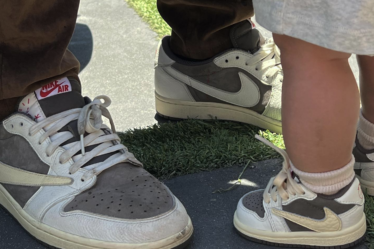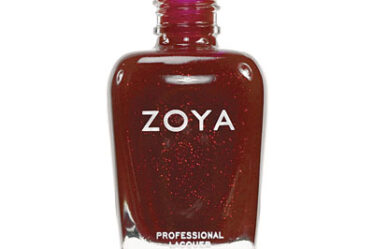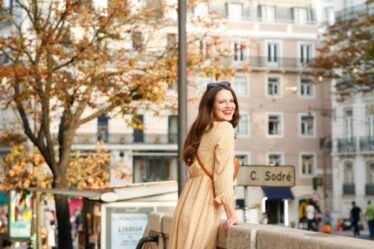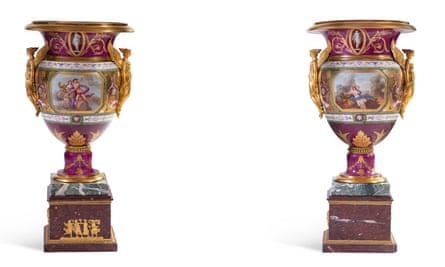
French interior designer and art collector Jacques Garcia is a man for whom the word “understated” does not exist.
The owner of the lavish Sicilian palazzo Villa Elena that featured in the second season of The White Lotus, who transformed the five-star Hotel Costes in Paris, the Banyan Tree in Doha and the palatial Hotel Mamounia in Marrakech has made opulence his trademark.
Now 75 pieces from his exceptional collection – one for every year of his life – will be sold by Sotheby’s in Paris to raise funds to secure the future of his home, the historic Château du Champ de Bataille in Normandy.
Most of the items are of royal provenance, including two pairs of armchairs and a sofa thought to have been ordered for Marie-Antoinette’s Turkish boudoir at Fontainebleau (each estimated at €400,000-600,000), as well as a fireguard and writing table used by the queen.
The sale also features a day bed believed to have been made for the wedding of Napoleon Bonaparte to Empress Marie-Louise in 1810 (estimated €100,000-200,000) and decorated with a medallion profile portrait of the couple.
A pair of Sèvres vases valued at up to €1.2m, purchased by Alexander Hamilton in St Petersburg where he was serving as British ambassador to Russia, will also go under the hammer along with two cabinets that belonged to King William III and Queen Mary II of England.
Garcia, who also redecorated the private rooms at the royal Palais de Versailles and over 30 rooms at the Louvre museum, bought the Champ de Bataille, originally designed by Louis le Vau, the architect of Versailles in the 1600s, 30 years ago in a state of dilapidation. Since then he has transformed the château, filling it with a treasure trove of 17th to 19th century furniture and art, and its vast grounds.
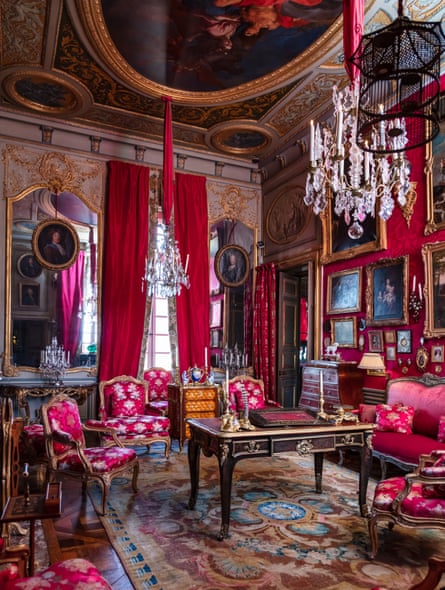
The estate, where Garcia keeps the reported purchase of at least one artefact every day, is an extraordinary monument to his eclectic and extravagant taste. From the dazzling splendour of rooms filled with baroque treasures from the reign of kings Louis XV and XVI to the Dalí-esque and disturbing: a hallway ceiling is decorated with taxidermy crocodiles above cabinets of stuffed animals and a vast collection of pinned insects. Even more macabre are the mummies in glass cases in the corners of a library that was once a swimming pool.
The manicured grounds – one of the largest private gardens in Europe – feature follies including a grotto named the Temple de Leda and a rose-coloured Mughal palace Le Pavillion des Rêves, to which Garcia decamps from the main house each summer, built from ruins imported from Rajastan after an earthquake more than 20 years ago.
Garcia admits nobody will even notice the 75 missing works when the auctioneers’ vans sweep down the château’s imposing gravel drive to transport them to Paris, but says it will not be easy parting with them.
“It was a difficult decision. This places is like a love affair for me. Each object was bought with my own money often when money was tight and finances complicated. But you can take away these 75 objects and the house remains the same for visitors,” he said. “But I have a duty to think of the future, and as I have no direct successors I have to do something, so the money will be used for some kind of fund or foundation.”
Mario Tavella, president of Sotheby’s France, has described Garcia as the “holy grail of French taste” and said the auction would be a “one off”.
“The power of exceptional residences lies in the unforgettable feeling that stays with those who has visited them. As with all of Jacques Garcia’s creations, Champ de Bataille is one such memorable place.”
The Jacques Garcia, Timeless auction will be at Sotheby’s Paris on 16 May.

